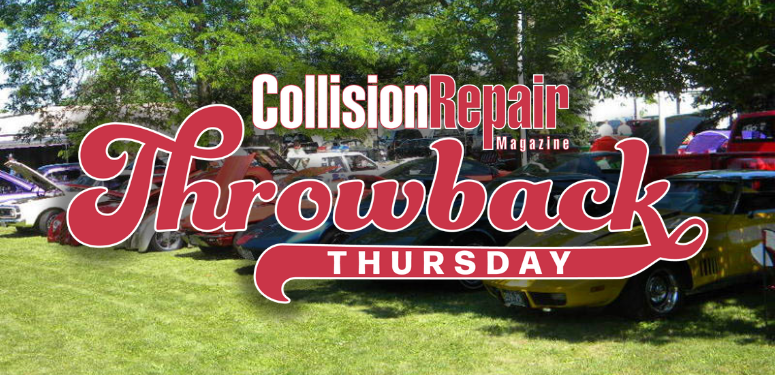Story by ALLISON ROGERS
The pandemic made everyone take a magnifying glass to the state of their operations. “For many businessowners the pandemic forced the realization of doing more with less,” says John Cox, Acoat Services Manager for AkzoNobel. “Crisis forced everyone to look at the fixed cost side of their business and make decisions based on those numbers.” In essence, many collision repair centres were forced to go lean—a principle that businesses everywhere strive toward in normal circumstances.
In many cases, workforces became smaller as cuts were made in efforts to survive the slowdowns. Those who remained, however, found ways to finesse their procedures and focus on improving details they may not have had time to consider under the typical ‘full throttle’ mindset of a full production board. With life raring back to some semblance of pre-pandemic normal, some questions remain; namely, are shops prepared to handle the same level of throughput they were dealing with before the pandemic? For many, the battle will be keeping hold of the leadership principles they’ve relied on throughout the pandemic. Can your operations remain lean? Better yet, can you do more? The answers to those questions all lay in your leadership.
What are lean operations?
Lean operations propose a business strategy driven by the principle of doing more with less. A lean organization understands customer value and focuses its key processes to continuously increase it.
The ultimate goal of lean operations is to provide perfect value to the customer through a perfect value creation process that has zero waste

The communication levels achieved amid the crisis have proven their power. Don’t let your connection suffer when the work comes roaring back.
Don’t cancel on your culture
If there is but one positive lesson learned amid the pandemic, it’s the importance of clear, concise communication. When the pandemic first gripped the world, the sheer power of ‘crisis communication’ was proven. Crisis communication—a term coined by communication scholar Timothy Coombs, referring to the dialogue and direction occurring prior to, during and after a negative occurrence—enabled businessowners to produce timely, relevant and transparent messages to stakeholders, staff and other business partners when the pandemic first hit. Those businessowners concerned with crisis communication and relaying all relevant information to their colleagues and workforce.
The pandemic and ensuing lockdowns immediately dwindled repair volumes. That was nearly two years ago. In the immediate aftermath of the pandemic, there was ample free time to discuss the situation at hand and, in turn, any grievances eating away at staff and potentially causing hiccups on the shop floor.
Albeit forced, the immediate closures allowed for top-to-bottom company reevaluation. Things may not be as rosy on the other side, though. Let’s face it—when operations are in full tilt there’s just not enough hours in the day to discuss everything you really want to. Don’t let that be your excuse—there’s always time for a chat with your staff. Patrol the break room during lunch hours, take a walk on the production floor and keep connected with your team. You spend nearly every day inside the same walls as them—but how much do you really know about them? Make an effort to connect. It could mean more than you know.

What does good communication entail?
• Dictating clear goals with your team (i.e. how many cars do you plan to put through today? This week? This month? Keep your team informed of your expectations).
• Dictating processes/whereabouts in repair procedures (For floor staff; keep in touch with your colleagues and always know what’s coming your way).
• Honesty (About state of the business, state of an employee’s work, etc. Hold people accountable for their actions. Be upfront and clear, while maintaining a positive attitude).
• Wellness checks (Making sure your staff are happy, no grievances or conflicts with workplace/other staff).
Organize, organize, organize
It may be tempting to take on every job that comes your way in the next few months. Don’t fill your bay with more than your team can chew. Seriously, they will thank you for it.
Only take on the jobs you feel you and your team can handle. The last time your team dealt with a docket like this could have been up 18 months ago. Not to mention that for newer staff, this is a whole new ball game. Ensure you have a production plan in place and understand the work mix that your current staff is capable of. If you give them too much to handle, they’ll almost certainly run for the hills—and scream obscenities about your business the whole hike up.
Keeping everyone on the same page when jobs ramp up is an integral key to success. If you’re able to pull off a seamless repair process and transition the job through the required repair stages smoothly, your KPIs will blossom to new heights.
For instance, consider implementing morning production meetings where you detail your expectations to the team. If your goal is to put five cars through that day, tell your team that. Be clear and concise with what you’re trying to accomplish each day.
If you find your team needs further visual assistance, consider implementing a production board, or an interactive version like that of AkzoNobel’s CarBeat, which handily displays colour coded boards easily understandable by everyone in the shop.
Accept the reality and learn from it
The truth of the matter is that businesses across the industry are lacking resources— whether that be in the parts department, materials shortages or a smaller workforce. Aim to prioritize a repair mindset in the ‘repair vs. replace’ equation. By focusing on repairs instead of replacements, the benefits are coupled; decrease the risk of parts delays and squeeze every labour hour possible onto those sheets.
One of the best ways to ensure satisfaction in shortages is to get the customer on your side. Explain your situation, that you’re at the disposal of delayed parts deliveries—or whatever the reason may be—honestly. Tell them exactly why you cannot deliver how you would like to. Believe it or not, customers are people too. They’ll likely understand. Trust honesty—it’s the best policy





































